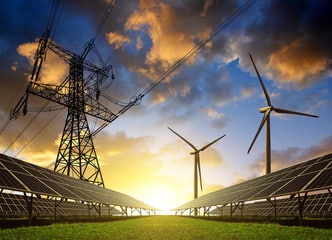California Commission Proposes Measures to Support Grid Reliability During Summer

The California Public Utilities Commission on March 5 released a proposal detailing utility programs to manage energy supply during peak hours so as to ensure reliability in the event of extreme heat in the summers of 2021 and 2022. The proposal is the latest in a series of actions under a proceeding that was opened in November 2020 in response to the grid operator’s rotating outages across California to deal with the affront of extreme heat conditions.
The new initiatives being proposed include:
- Demand Response Programs: Pacific Gas & Electric, Southern California Edison, and San Diego Gas & Electric would introduce an emergency load reduction mechanism. This pilot program would compensate customers for voluntarily reducing power system demand in the event of a grid emergency.
- Improved Rate Plans to Encourage Conservation: The proposal would also require utilities to alter their critical peak pricing programs, which charge a higher price for power consumption during peak hours on selected days.
- Increasing Overall Procurement Requirements for the Utilities: The proposal would direct utilities to procure a minimum of an additional 2.5 percent of resources for customers in their territories, representing an effective increase of the planning reserve margin from the existing 15 percent to 17.5 percent.
The measure stems from an order issued in February directing utilities to immediately contract for resources to serve peak and net peak demand this summer. Among other actions taken in response to the 2020 outage, last November, the commission ordered utilities to procure 3.3 gigawatts of new, zero-emission electricity resources, and make long-term investments in new in-state generation. In August, regulators approved seven clean energy contracts for Pacific Gas to meet its 2021 Integrated Resource Plan requirement of nearly 717 megawatts, half of which must come online by Aug. 1, 2021.
These actions, along with other commission orders, are expected to result in nearly 8 gigawatts of clean energy resources, which would be developed over the course of the next three years.
EnerKnol Pulses like this one are powered by the EnerKnol Platform—the first comprehensive database for real-time energy policy tracking. Sign up for a free trial below for access to key regulatory data and deep industry insights across the energy spectrum.
ACCESS FREE TRIAL